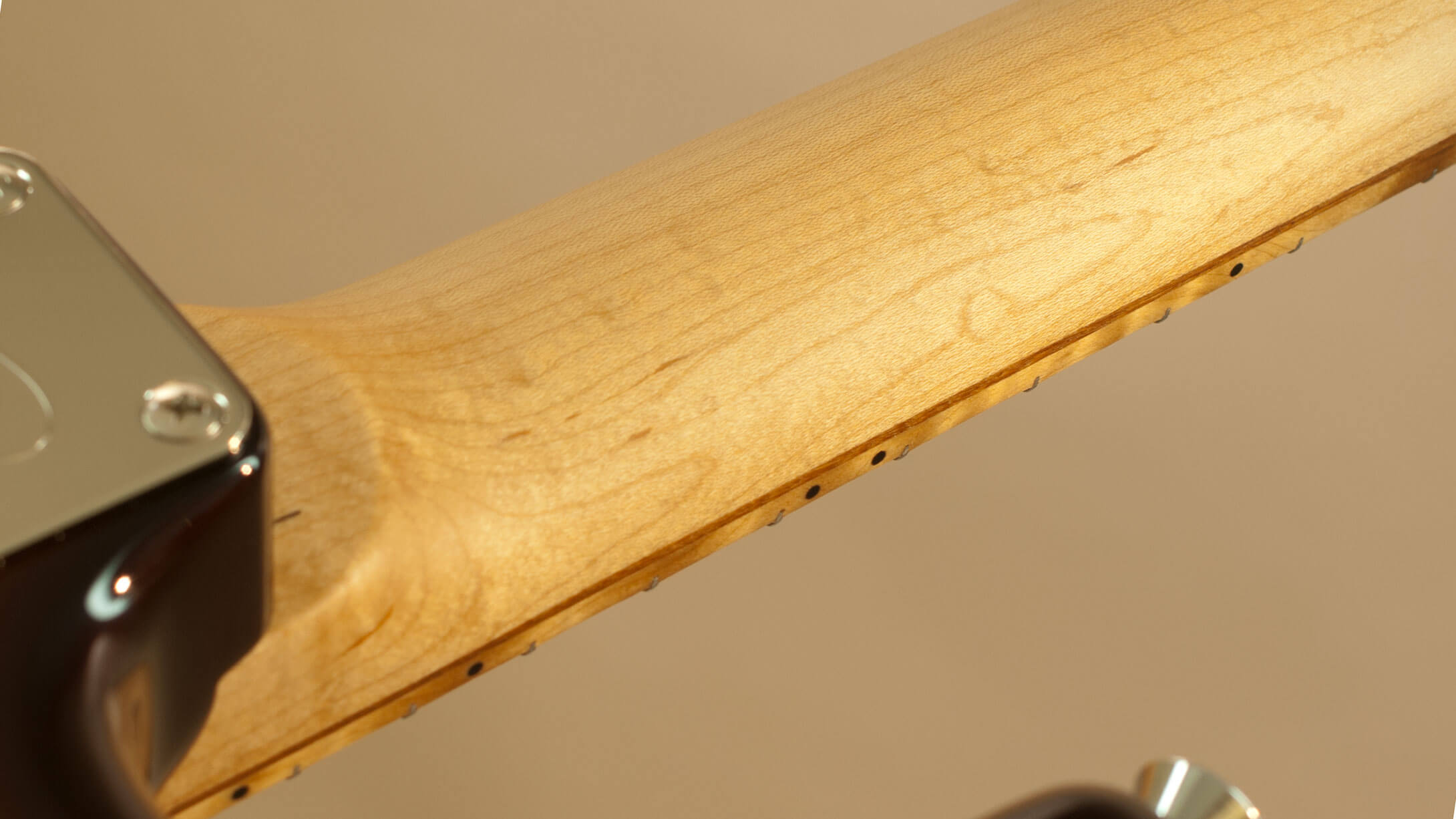
THE IDEAL MATERIAL FOR BOLT-ON ELECTRICS
Rock maple for bolt-on necks
Canadian rock maple (Acer Saccharum) has been the iconic material of bolt-on electric guitar necks since 1940’s. There are good reasons why it is so. Since the availability of great quality rock maple from sustainable sources is good, I see no reason to replace it with something else. Don’t fix what ain’t broken, as they say.
Stable and strong
Rock maple – often called ‘hard maple’ or ‘sugar maple’ – is a stable and strong tonewood that suits ideally to be used for bolt-on electric guitar necks.
We offer maple also for fretboards, adding brilliance and clarity to the overall tone.
Screws hold well in maple
One important detail, often left overlooked, is that the threads of wood screws hold in maple extremely well. An essential attribute considering the neck bolts. Also the surface hardness of maple suits exceptionally well for bolt-on construction, making the joint stable when the neck pocket is tight.

GOOD STUFF MADE EVEN BETTER
Thermal ageing of maple
Even if maple would be good to go as it is, we have all our maple thermally aged before turning it into guitars. This ingenious method improves the stability and rigidity of the wood. In other words, it makes this good stuff even better.
Those of you who want to learn more about thermally aged tonewood, check out the separate article with detailed explanation why we have used this method since it became available in Finland in the late 1990’s.
Hand picked, every piece
Our maple is hand selected, straight grained, stable and reliable. We use mostly plain maple, but occasionally we might have some gently flamed pieces available as well, so feel free to ask for availability.
I don’t offer stronger flamed or birdseye figured maple, since those are not in my experience suitable to be used as neck wood for stability reasons. Sometimes we do have subtly flamed maple available for necks, so in case you’re interested, just give us a shout.
Our maple comes from sustainable sources. Rock maple is not listed on CITES, and the use of it does not require certification of any kind.